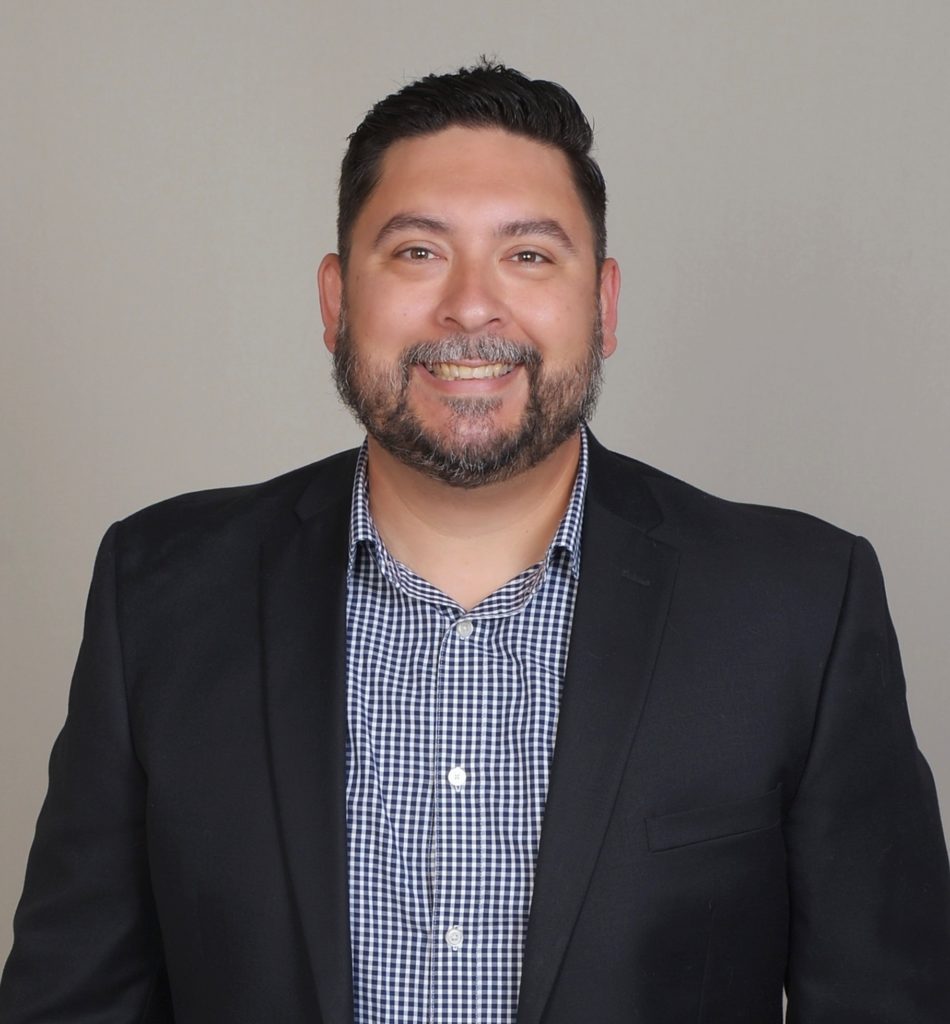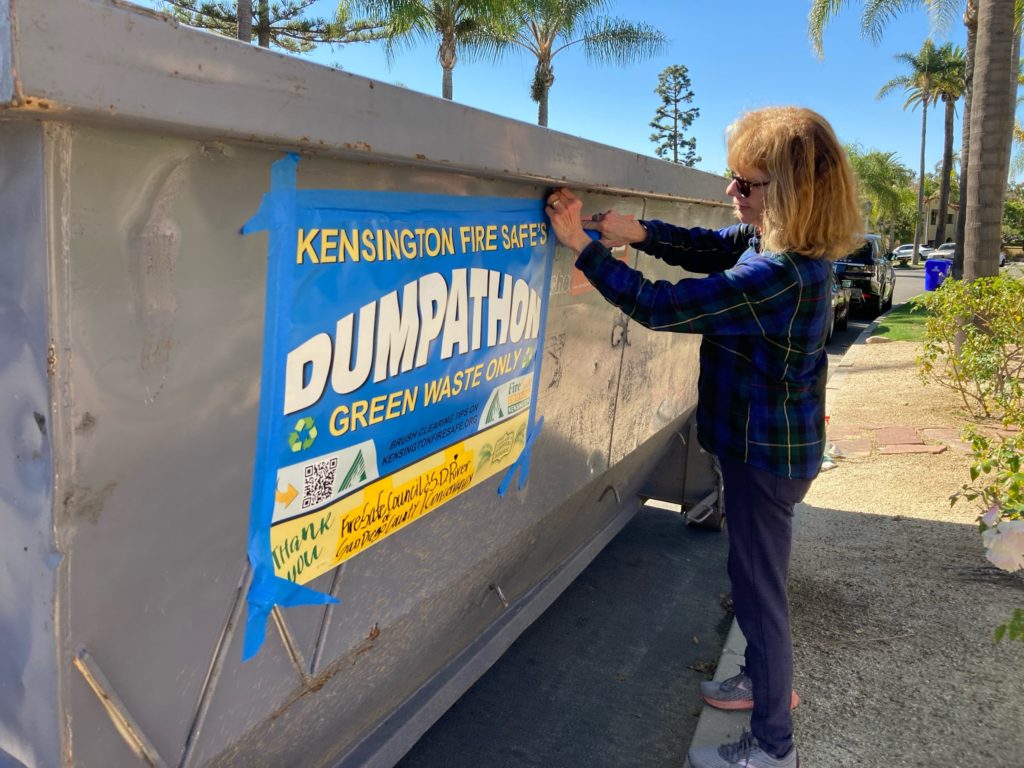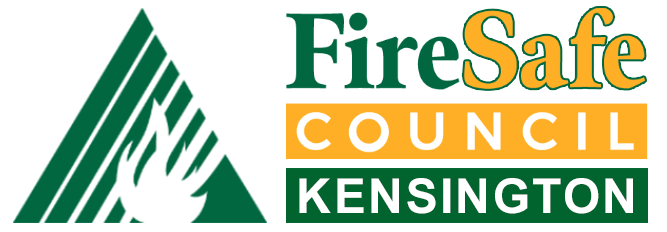By Judy Beust Harrington, Co-Chair, Kensington Fire Safe (KFS)
Kensington’s fire safe council will share researched answers to inquiries from community members in this column. Send your fire-related questions to info@kensingtonfiresafe.org. Pictures appreciated!
Q: Over a recent delicious lunch at Clem’s Station on Monroe, we talked with Tony – manager, bartender, waiter, and part of the owing family – about problems residents are having getting, keeping, or affording homeowner insurance. He asked how the California FAIR Plan worked.
A: Good timing, Tony. We recently sat in on a conference call that gave us some insights into the “Fair Access to Insurance Requirements” program, aka the California FAIR Plan (CFP).
First of all, it’s not a government entity, as a lot of folks think. Although established by a California statue in 1968, CFP is run by a consortium of California property and casualty insurers. They’re required to participate if they want to do business here, and they share in the plan’s overhead, profits and most significantly – losses, in direct proportion to their market share in our state. (1)
So that means the bigger their sales, the greater their CFP plan liabilities, on top of whatever they’re paying out for their own insured. Is it any wonder you may find it hard to get a policy with the biggest insurers like State Farm, The Hartford and USAA?
FAIR plans, which exist in 26 states, weren’t intended for long term coverage, but rather as a temporary safety net until traditional insurance could be secured. In other words, it’s the insurance of last resort when no other insurer will take you on. But with our fire losses, CFP covers over 320,000 policies – about 3% of Californians. (By contrast, Washington State’s CFP Plan only covers about 130 policies.) (2)
CFP doesn’t take all comers. Brokers must answer questions about why they’re placing the risk with it, and confirm they’ve been declined by other carriers. As a result, CFP’s growing share of high-risk properties results in more expense for insurers and higher premiums for the insured..(3)
But…there are other problems. According to a June article in the San Francisco Standard, critics say the CFP is underfunded and mismanaged. Perhaps not surprising since, as the article says, “The very companies that refuse to insure properties in high-risk areas are still insuring them through the “back door” of CFP, and it doesn’t always pay out when it ought to.’
The article goes on to cite a Department of Insurance four-year study that found numerous issues, including that the CFP on occasion failed to provide standard fire insurance coverage, particularly regarding smoke damage claims. .(4)
Kensington Fire Safe’s insurance advisor, Scott Caraveo, says the process can be slow. “As homeowners buy in areas with higher fire risk, they’re ending up with five or more insurance quotes from several brokers, which may all be from the CFP. So now CFP has five different applications from five different brokers, all for the same address, creating a gigantic backlog. The three or four days it used to take for a CFP quote to be returned have become three weeks or more.”

Scott Caraveo, Insurance Advisor to Kensington Fire Safe
Higher Prices & Less Coverage
Scott pointed out there was a 15 percent increase this past December, but it’s not spread evenly. According to a November ABC report, “Some people in the most wildfire-prone, high-risk areas could see their rates as much as double.” And CFP covers less than traditional insurance plans.(5) Of course, some of our neighbors have already seen their homeowner insurance double if it’s renewed at all.
So, that’s the bad CFP news. The good news is we at least have a backup insurance option. If interested, your insurance broker can help with the plan’s application process, which requires information on your home’s replacement costs and date-stamped photos. You’re supposed to get a quote that’s good for 30 days.
Another option is an excess and surplus (E&S) carrier specializing in insuring high-risk properties. These policies are not backed by the California Insurance Guarantee Association, although they likely have other fail safes, such as reinsurance. Check with your broker or the Surplus Line Association of California website for more information.
Meanwhile, make your home more attractive to insurers by hardening it against fire embers. A good time to trim excess green fuel and dump it for free is during the KFS Spring Dumpathon, Thursday, April 25 to Monday, May 6th. Check for location announcements at kensingtonfiresafe.org and on Nextdoor. And please, no non-greens. We can be fined for that!

Watch for announcements about our April 25th to May, 6th Dumpathon!
By the Fire Safe Way… we’re hoping to arrange two presentations this Spring:
- Efforts to Keep Our Canyons Safe by representatives from San Diego Open Space Brush Management and the San Diego Fire Department.
- Assessing Fire Risk by representatives from Verisk on how they report on risk for insurance companies.
- Watch for date announcements on Nextdoor and KFS’s Facebook page. To receive this info directly, send your email address to info@kensingtonfiresafe.org
Notes:
- https://www.cfpnet.com/about-fair-plan/#:~:text=The%20California%20FAIR%20Plan%20was,from%20a%20traditional%20insurance%20carrier.
- https://content.naic.org/cipr-topics/fair-access-insurance-requirements-fair-plans#:~:text=The%20states%20that%20have%20their,similar%20purpose%20to%20FAIR%20plans.
- https://sfstandard.com/2023/10/19/california-insurance-crisis-CFP-plan-1000-applications-rate-increase/
- https://sfstandard.com/2023/06/05/as-insurers-retreat-california-homeowners-may-need-the-CFP-plan-so-what-is-it/
- https://www.cfpnet.com/
